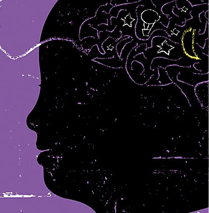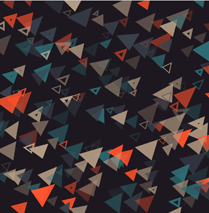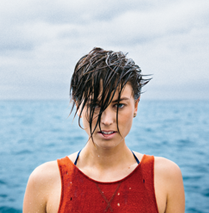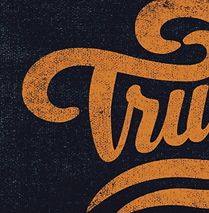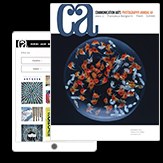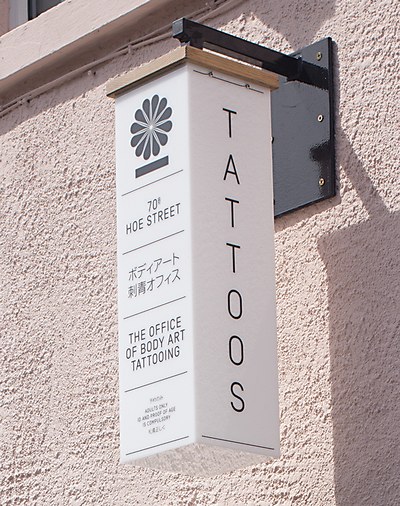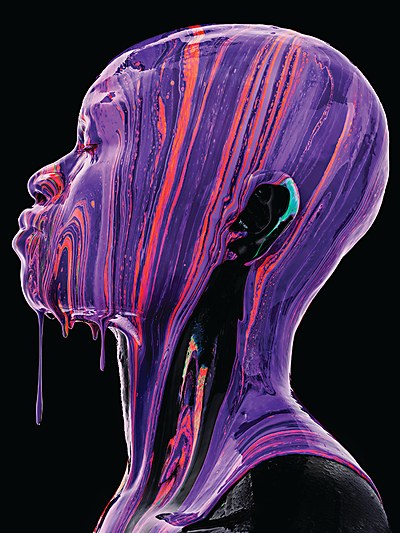When Paris- and New York–based branding and digital product agency AREA 17 was founded in 2003, website design was in its infancy, something seen as little more than an adjunct to marketing. Twenty years on, the design of digital information is as complex and nuanced as the information itself, presenting a challenge that AREA 17 is better placed to meet than most. Because, to put it in the words of client Michael Beirut from design firm Pentagram: “AREA 17 does three things very well. First, [it] really understands what a digital product has to do, and what [it delivers] is perfectly suited to the task. Second, [it’s] able to handle complexity and make information understandable. Finally, [it has a team of] great designers; when we work with them, they never fail to take our ideas and make them better. Some people are good at one or two. What a pleasure it is to collaborate with AREA 17, [which is] so good at all three.”

design director; Hannah Kreiswirth, chief operating
officer; Kemp Attwood, founding partner and chief
creative officer; and George Eid, founding partner
and chief executive officer.
Jad Mouawad, head of communications and digital at the International Energy Agency, which collaborated with the agency in 2018 on a rebranding project as well as a full revamp of its website, adds that “the distinguishing factor for me is that [it’s] an agency [that] has both design and engineering as its core expertise.”
George Eid laid the foundations for the agency in the late 1990s working primarily in filmmaking, but in 2003, the current AREA 17 was founded with the help of Arnaud Mercier, a renowned interactive designer and founder of Marseilles-based design firm Elixirstudio. Mercier was originally approached to assist in the creation of AREA 17’s visual identity; as a result, he and Eid began to collaborate on projects before merging their companies in 2005 and setting up base in Brooklyn. Expansion into Europe followed a year later with a Paris studio helmed by Dominique Deriaz, who had joined the agency in 2004 as a senior producer and information architect.
Browse Projects
Since those early days, the agency has honed the art of building brands, experiences and technologies for many of the world’s most influential organizations, moving from a time when, as Eid puts it, “Digital was still run by marketing departments, and software engineers sat with IT teams,” to a point where “it’s rare to speak with clients that don’t have digital at the center of their business strategy. Thinking back it’s thanks to that environment that we became so selective with our clients. At the time, we’d say we wanted to ‘create the car itself, not the commercial for the car.’ This single decision set us on a path to work with a specific kind of client—mainly in the news, media and content spaces—because that was the primary industry shipping ‘cars,’ so to speak. It was an exciting time because we got to create so many firsts.”
Among them were some of the world’s leading social media platforms, including GOOD magazine for social good, publishing company Newsring for political debate and the co-creation of Quartz magazine, “a publication that revolutionized the news and publishing industry and established many of the UX standards the world uses today,” says Eid.
AREA 17’s client list has grown to include world-renowned brands and institutions such as the Art Institute of Chicago, Balenciaga, the Fine Art Museums of San Francisco, Fondation Louis Vuitton, the Getty, Harvard Art Museums, the Museum of the American Revolution, the Museum of the Future in Dubai, the National Gallery of Canada and the National Museum of Mexican Art—and, on the editorial side, Le Parisien, the New York Times and Princeton University Press.
What these clients all share is “our fundamental belief that design and engineering are good for business,” enthuses partner and chief creative officer Kemp Attwood. “When we work with organizations already living and breathing that belief, we can be sure this criterion is met.” While such visually literate institutions could make for a challenging partnership because they already have such clear ideas, Attwood adds, “For the most part, we haven’t found that to be the case. They’re usually excited for a stimulating partnership and eager to share their ideas in connection with ours.”
From the start, those clients have benefited from an approach that, while bespoke and responding to individual partners’ needs, industry norms and best practices, also has “certain identifying traits based on a set of principles and a methodology that underpin our work,” says group design director David Lamothe. “These include a focus on user-centered design; a commitment to accessibility and inclusivity; and a dedication to creating beautiful, functional design that elevates the user experience and leaves a lasting impression.”
Part of the agency’s commitment to accessibility and inclusivity has involved the development of the open-source CMS toolkit Twill. “AREA 17 develops custom software for clients, and content management often plays a significant role in most of the products we create,” Eid says. “But traditional CMS solutions are problematic, leading to either inflexible templates or expensive custom solutions. So, we developed Twill, which offers the best of both worlds. It’s been successful, with many organizations like Nike and the New York Times using it, and it being open source has created value for AREA 17 by attracting clients, retaining talent and facilitating effective work. Additionally, clients using Twill are able to contribute to its development, creating a new kind of client relationship that could redefine our industry.”
Building strong client relationships is at the heart of how AREA 17 works, and talking to some of those clients, the agency is clearly good at it. As Mouawad says: “We view the team as a close partner rather than an external contractor. They helped ground a modern and innovative brand identity that matches our mission to be the leader in the clean energy transition, and the site reflects our authority on policy, data and analysis in the energy field by showcasing our work in an easy-to-use and engaging manner. I don’t think this would have been done so seamlessly if they didn’t provide this dual-core competency.”
Working predominantly in web design doesn’t come without its challenges: not only must you remain informed and excited about the developing digital world, but you also must ensure that a website’s design and content remain innovative, authentic and relevant for both its client and user. Feeding into this are a range of opportunities for learning, including an educational series called Gather& and, last year, the introduction of an apprentice program pairing six apprentices with senior mentors. Externally, the agency partners with Useful School (usefulschool.com), a pay-what-you-can online design school for people of color, holding student work critiques and inviting students to present their research and perspectives to the global team. As Hannah Kreiswirth, AREA 17’s partner and chief operations officer, sees it: “We think of ourselves as a learning organization, and this sentiment is both a grounding for our culture and essential for innovation, creativity and outcomes in our work. For us, innovation is not about having a resolution or getting to an answer: it’s about a constant pursuit of something worth creating, a pursuit that is enhanced by a multiplicity of perspectives; by learning, experimentation and iteration; and by trust, growth and humanity.”
In its plans, hopes and thoughts for the future—and what the agency is calling its third act as it moves into its third decade of existence—AREA 17 says it is focusing on three things: advancing the important work of its clients, creating a better internet and open sourcing more aspects of the agency. “The internet poses unprecedented threats to society, including risks to our security, privacy, freedom, access and well-being,” says Eid. “It’s not an overstatement to say that the way we advance the internet today will shape the future of humanity. We must build brands, experiences and technologies that enhance life rather than distract from it. We must use the internet to get off the internet, allowing us all to live more fulfilling lives together in the real world.”
The most recent threat to that world, the global COVID-19 pandemic, saw AREA 17 implement many shifts in its working practices. “It sharpened our focus,” says Kreiswirth. “With license to break down systems and structures previously guarded as untouchable norms, we’ve embraced a new paradigm for work that puts people’s wellness, growth and personal motivation at the center of our business strategy and priorities.” And, of course, it also necessitated huge shifts for AREA 17’s clients, many of whom had real-world cultural experience and education programs that had to be translated into online ones as quickly as possible.
“The biggest shift they experienced was that the importance of their online content and communications leapt to the forefront of their priorities,” Attwood recalls. “They began to see themselves as media companies. With budgets for these organizations [being] limited, most of them relied on the teams and tools they already had in place to make this shift. In some cases, we consulted on virtual programming and social engagement, while in other cases, our clients were able to use the platforms we’d already delivered on.
“Our work with the Art Institute of Chicago allowed it to pivot to a ‘virtual visitation’ strategy that combined the online collection, articles, interactive features and more, resulting in a huge increase in visits and engagement,” he continues. “As part of our ongoing partnership with Fondation Louis Vuitton, we launched FLV Play, a singular destination that aims to offer a selection of the foundation’s digital video content to online visitors. We partnered with the Fine Arts Museums of San Francisco to create a website that makes art personal and accessible; [its] new digital platform [features] a bespoke filtering system that empowers users to make connections (and raise questions) about the forces that intersect to mold artists, artworks and art movements.”
As the world’s focus shifts beyond COVID to the future, I ask the AREA 17 team what they imagine our digital world will look like in 50 years. Eid is unequivocal. “Imagining what our digital world will be in 2050 is less important than ensuring that we’ll be around to enjoy it,” he says. “The International Energy Agency created the roadmap to Net Zero by 2050, and by most accounts, the battle will be won or lost in the next decade. What can we do to win this proverbial decade-long battle? We need to ask ourselves whether our existing design methods are equipped to address the climate crisis, let alone the cultural, ethical and social challenges we must overcome as we imagine a better world—digital and otherwise—in 2050.” ca




